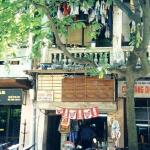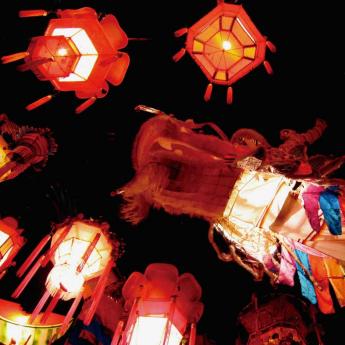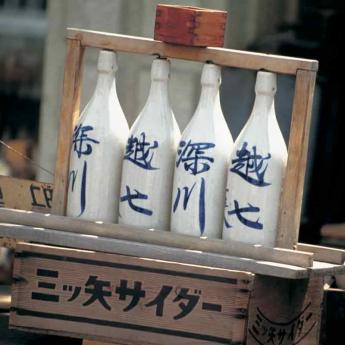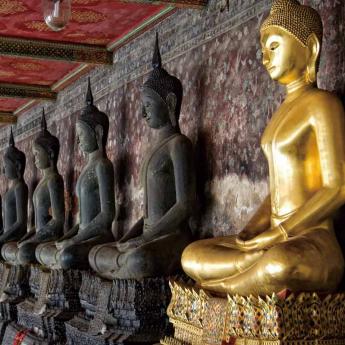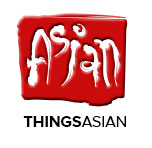The Streets of Hanoi
The Streets of Hanoi change. Cities in Southeast Asia are developing at unprecedented levels and there is widespread new construction and growth. Western ways are slowly infiltrating the ancient customs of the East. Many travelers now pass through Vietnam, following the recent opening up of this wonderful country and many changes - some for the worse - have occurred in recent years.
Yet despite this, Vietnam still manages to retain its permanently ingrained, strong Vietnamese identity.
Twenty-first Century life goes on amongst the old traditions and nowhere is this more apparent than in the aptly named Old Quarter found in Vietnam's northern capital, Hanoi.
Central Hanoi, the Old Quarter is a chaotic square kilometer of ancient merchant quarters, dating back nearly five hundred years. As if mirroring Vietnam itself, the area's still intact maze of narrow streets, just north of Hoan Kiem Lake, is a hive of industriousness and frenetic movement. Amongst the age-old buildings, life very much carries on horizontally and vertically.
Women hawkers wearing the traditional Con Dai hats arduously make their way up the streets balancing shoulder carriers groaning with fresh flowers and produce. Tradesmen creating their wares spill out onto the already congested pavements, littered with rows of parked motorbikes. Cramped shop front kiosks sell every type of conceivable goods packed up high to the rafters. Amongst the gnarly roots of Banyan trees and amidst all this discord, there are incredible food stalls every few metres or so along the pavements.
Hanoi residents squat low on tiny plastic tables and seats helping themselves to piles of steaming rice, fresh greens and bubbling noodle soups.
The Old Quarter's street names date back five centuries ago when the area was divided up amongst thirty-six artisan's guilds. Even today, a remarkable number of streets are still dedicated to that original craft or its modern equivalent.
Hence, Hang Quat Street - specializing in funerals and festivals- is a street choc-a- bloc with lacquerwork and bright red banners. Hang Be Street specializes in bamboo. This certainly makes shopping a whole lot easier as you simply choose the street that sells the items you require.
Many of the slender, high residences are known as Tube Houses and some date right back to the fifteenth century. These aesthetically pleasing narrow abodes evolved from small market stalls, which consequently grew upwards and backwards. Many buildings are only two meters wide - the result of strict street-frontage and inheritance tax.
But appearances are deceptive and behind the front façade stretches a succession of living quarters, storerooms, and courtyards sometimes up to 60m in length. If you glance upwards, carefully trying to avoid being run over by the unrelenting motorbike traffic, you'll see a cascade of small balconies full of pretty ceramic pots filled with miniature trees and the days washing hanging out to dry.
The dwellings are intermittently punctuated with communal houses - "dinh" - and miniscule gaily-painted temples, very often found hidden behind wooden gates.
In the nighttime, it's a calmer place. The unrelenting temperatures have cooled down, families come out to gossip and sit down to copious piles of delicious food. Small charcoal grills alarmingly left on the ground waft smells of freshly cooked and smells of ginger and chillies waft through the air.
There is less traffic on the streets and children play on the streets. Small light bulbs entwine the overhanging branches, making this a magical and all-consuming area, which if you have time on your hands could be explored endlessly for weeks.
A guide is not required, as it's straightforward enough to find your way round the area. If you do find yourself lost, it's almost a bonus, because it may lead to other new, delicious findings. It's certainly best to explore on foot, although the more adventurous might find renting a local bicycle a lot more exciting. One could indeed curse the prevalent domination of the ubiquitous motorbike, after being constantly evicted from the Old Quarters congested pavements.
But then Vietnam again resists the last bastion of modern life and has yet to succumb to the onslaught of the motorcar. So enjoy the Old Quarter whilst you can, motorbikes and all, before the cars start clogging up the streets - and there's no room left at all to walk down the ancient streets.
* * * * *
 ThingsAsian
ThingsAsian

